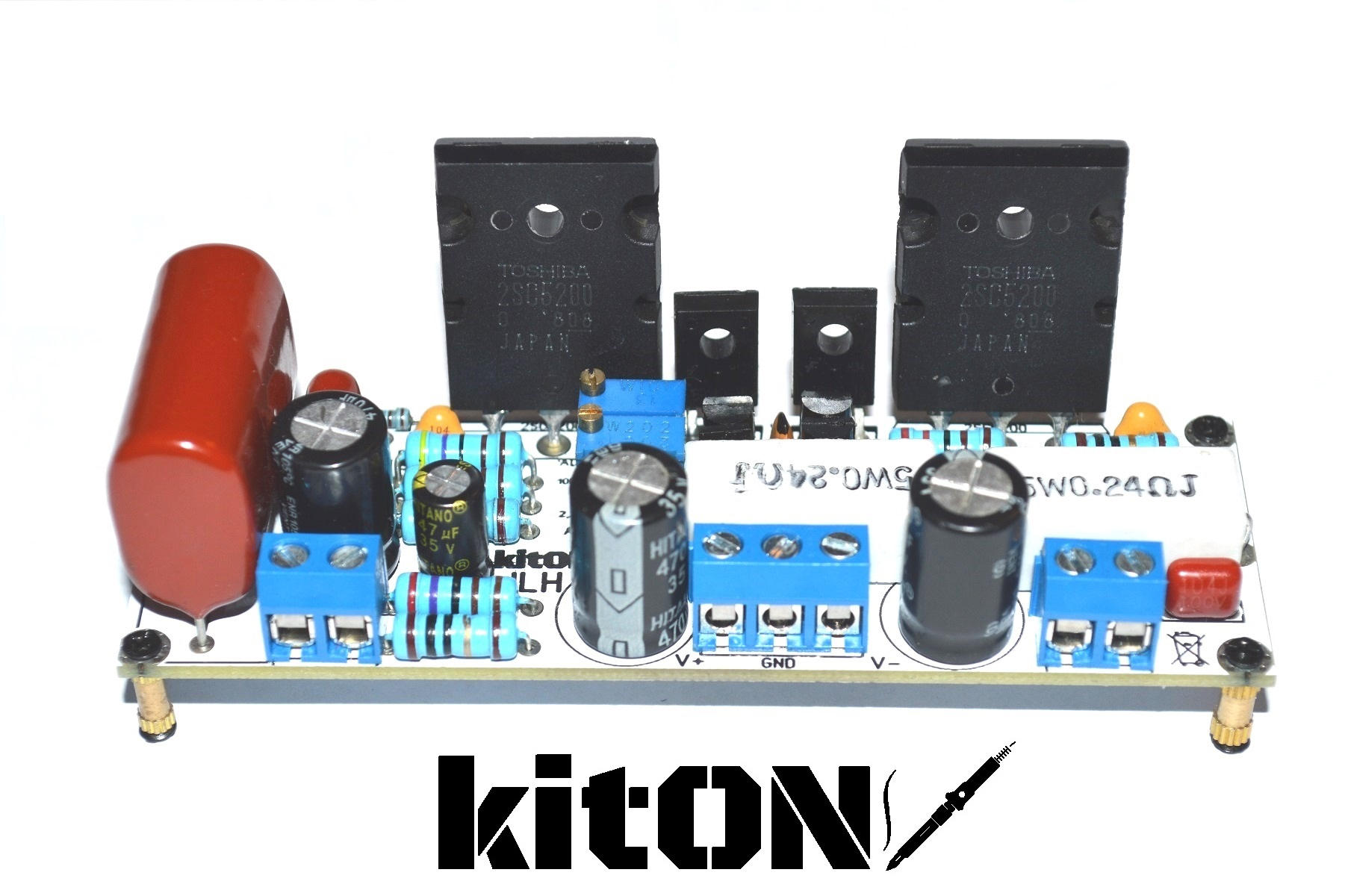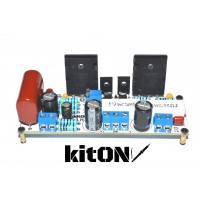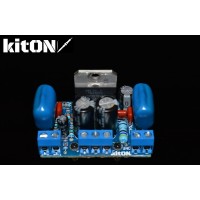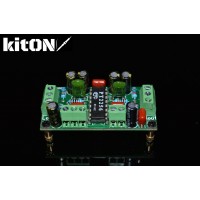JLH 2005, amplifier testing. Characteristics Measurement
| Testing device | JLH 2005 amplifier class A |
| Sampling mode | 24-bit, 48 kHz |
| Interface | E-MU1616m |
| Testing chain | E-MU1616m>JLH 2005 amplifier class A>E-MU1616m |
| Constant voltage DC | -28V...0...+28V |
| Load resistance | 4 Ohm |
| Testing power | 9W |
| Maximum power | 30W |
| Output transistors | 2SC5200 TOSHIBA |
| Quiescent current | 3A |
| 20 Hz - 20 kHz filter | ON |
| Normalize amplitude | ON |
| Level change | -0.3 dB / -0.3 dB |
| Mono mode | ON |
| Calibration singal, Hz | 1000 |
| Polarity | correct/correct |
Summary
| Frequency response (from 40 Hz to 15 kHz), dB | +0.01, -0.06 |
Excellent |
| Noise level, dB (A) | -106.7 |
Excellent |
| Dynamic range, dB (A) | 106.7 |
Excellent |
| THD, % | 0.067 |
Good |
| THD + Noise, dB (A) | -63.5 |
Average |
| IMD + Noise, % | 0.066 |
Good |
| IMD at 10 kHz, % | 0.063 |
Good |
| General performance | Very good |
Frequency response

Left |
Right |
|
| From 20 Hz to 20 kHz, dB | -0.12, +0.01 |
-0.12, +0.01 |
| From 40 Hz to 15 kHz, dB | -0.06, +0.01 |
-0.06, +0.01 |
Noise level

Left |
Right |
|
| RMS power, dB | -104.4 |
-104.4 |
| RMS power (A-weighted), dB | -106.7 |
-106.7 |
| Peak level, dB FS | -75.0 |
-75.0 |
| DC offset, % | -0.0 |
-0.0 |
Dynamic range

Left |
Right |
|
| Dynamic range, dB | +104.5 |
+104.5 |
| Dynamic range (A-weighted), dB | +106.7 |
+106.7 |
| DC offset, % | +0.00 |
-0.00 |
THD + Noise (at -3 dB FS)

Left |
Right |
|
| THD, % | 0.07214 |
0.07214 |
| THD + Noise, % | 0.07239 |
0.07239 |
| THD + Noise (A-weighted), % | 0.09426 |
0.09426 |
Intermodulation distortion

Left |
Right |
|
| IMD + Noise, % | 0.06567 |
0.06567 |
| IMD + Noise (A-weighted), % | 0.04015 |
0.04015 |
IMD (swept tones)

Left |
Right |
|
| IMD + Noise at 5000 Hz, | 0.08059 |
0.08059 |
| IMD + Noise at 10000 Hz, | 0.05509 |
0.05509 |
| IMD + Noise at 15000 Hz, | 0.05356 |
0.05356 |
Maximum power
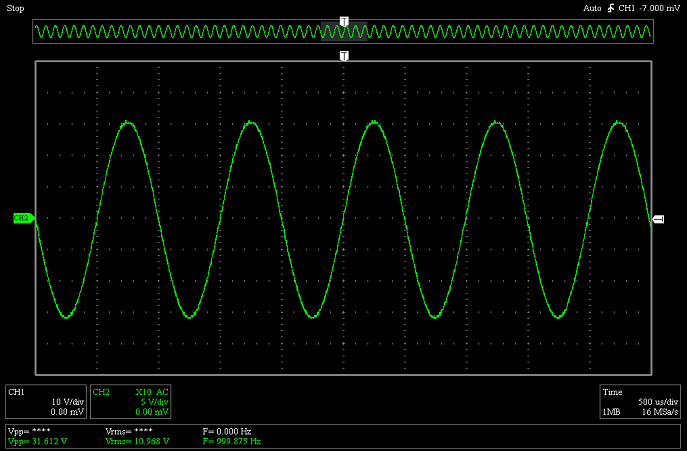
Calculation formula |
Meaning |
|
| Maximum power, W | (Vrms x Vrms) / 4 Ohm |
30 |
Conclusions
| The classic case, when measurements about the sound can not say almost anything. And yet, there is something to discuss in the obtained characteristics: The original JLH 2003 circuit was taken as the basis for the design of this amplifier and transferred to a modern element base. Additionally, changes and improvements have been made to the circuit to reduce noise and background, resulting in a low noise level. This revision allows you to abandon the stabilized power supply and for the normal operation of the amplifier, a conventional power supply is sufficient - a diode bridge + smoothing capacitors 20,000 uF, subject to the only rule for all amplifiers with a transformer power supply - the maximum possible distance from the transformer to the amplifier. |
| Properly routed and designed PCB, super compact and with the shortest possible track length, allows the use of fast transistors like the 2SC5200 absolutely stably and without any excitation. |
| The use of only high-quality components, including the original transistors of all stages and 1 W resistors,
ensures the reliability and durability of the module, subject to proper operation and good cooling.
As for harmonic distortion, the prevailing second harmonic at the level of -63dB is rather the signature style of t
he amplifier, for which several generations of high-quality sound lovers love it so much.
Summary: All the positive reviews about this JLH 2005 amplifier are true. Light and crystal clear (with the appropriate source) sound immediately stands out from other amplifiers, even without comparison "on the forehead." At the same time, you need to remember that this is pure A class and with an output power of 2x30 W, the amplifier will consume 150-200 W from the network (depending on the quiescent current) and, most importantly, this radiator is not decently large for passive cooling - about 3000 sq. cm. to one channel. This amplifier can be recommended for high-quality bookshelf, floor acoustics and broadband acoustic systems. You can buy the amplifier from our kit-amp.com store. The JLH 2005 can also be recommended as a tweeter/midrange driver in Bi-amping and Tri-amping systems in air-conditioned rooms and if electricity bills are not that important. Unleashing the potential of the amplifier is possible only when using a signal source and acoustics of a sufficiently high level |
Related Products
Amplifier AUDIOPHILE, 100W
High level and quality power amplifier module. The amplifier is designed specifically for "sophisticated" lovers of high-quality audio.Simple circuitry, using the so-called "current mirror" in the pre..
1,550.00грн.
Amplifier JLH 2005, 30W
Over the past 50 years, progress in the electronics industry has come a long way. But the same cannot be said about the technique for reproducing sound. For almost a hundred years since the invention ..
1,750.00грн.
Amplifier JLH 1969, 10W
Over the past 50 years, progress in the electronics industry has come a long way. But the same cannot be said about the technique for reproducing sound. For almost a hundred years since the invention ..
1,560.00грн.
Related Articles
Measurement technique
Any more or less complex electronic device requires a functional check and adjustmentThe audio power amplifier is no exception and measurements of the characteristics of this device are not only a dev..
JLH 1969, amplifier class A, measurements
Testing device JLH 1969 amplifier Sampling mode 24-bit, 48 kHz Interface E-MU1616m Testing chain E-MU1616m>JLH 1969 amplifier>E-MU1616m Constant volta..
Amplifier HITACHI Premium 100W, measurements
Testing device Amplifier HITACHI Premium 100W Sampling mode 24-bit, 48 kHz Interface E-MU1616m Testing chain E-MU1616m>Amplifier HITACHI Premium 100W>E-MU16..
Products viewed
TDA7294 original inverting mono amplifier 100W
High-quality inverting amplifier based on the original and very popular TDA 7294 microcircuit. The w..
630.00грн.
TDA7293 original inverting mono amplifier 110W
High-quality inverting amplifier based on the original and very popular TDA 7293 microcircuit. The w..
870.00грн.
Device for comparing audio
Do you want to understand what sounds best of the two: DACs / amplifiers / speaker sets? Are you pla..
2,160.00грн.
Electronic volume control PT2256 with loudness
When assembling or repairing audio amplifiers, it is not uncommon for it to be necessary to adjust t..
360.00грн.

